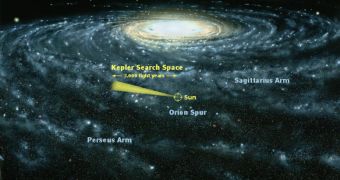On Thursday, mission commanders announced that NASA's Kepler Space Telescope mission was primed and ready for launch, on the 5th of March, 2009. It took a lot of effort to get here, but now the most recent tool of scouting the Universe for Earth-like, inhabitable planets is ready for deployment. According to the space agency, the instrument will have a range of 3,000 light-years, which means that it has great chances of discovering planets similar to our own in this area.
“We're only two weeks from launch and there's a lot of activities going on down at the Kennedy Space Center right now,” the director of NASA Headquarters' Astrophysics Division in Washington, Jon Morse, says. The new spacecraft is scheduled to leave the Earth carried by a Delta II rocket, which will blast off from the Cape Canaveral Air Force Station in Florida. “Most of these planets do not have Earth-like sizes or orbits. I call it our planetary census-taker,” he adds.
“Kepler's designed to find hundreds of Earth-like planets if they're common around stars. Kepler is not hoping to find E.T., it's hoping to find E.T.'s home,” William Borucki, who is Kepler's principal investigator, from the Ames Research Center in Moffett Field, California, adds.
The original plan maintains that the new telescope will remain in orbit for approximately three and a half years, during which time it will scout neighboring solar systems for planets 30 to 600 times smaller than Jupiter. In fact, any Earth-sized object will constitute a point of interest for the new instrument, and its operators hope that the mission is to be successful, in that at least a few Earth-like planets will be found.
There are currently numerous speculations as to just how many such celestial bodies that can sustain life are in the Universe. Some hold that they number in the billions, while others argue that only a selected few meet all the required conditions for sustaining life or at least liquid water. It remains to be seen what surprises Kepler will uncover among the stars around us.

 14 DAY TRIAL //
14 DAY TRIAL // 
